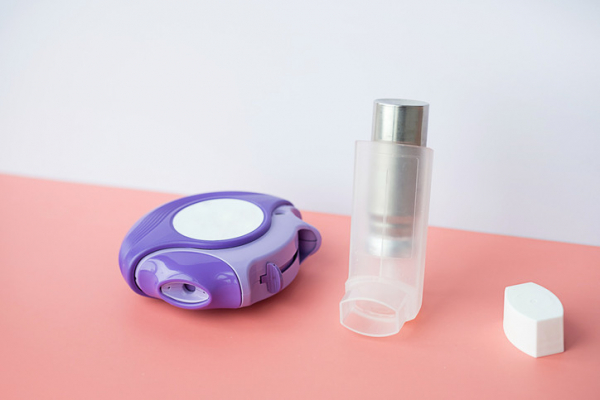
A mindful way to help manage type 2 diabetes?

Lifestyle changes like regular exercise, a healthy diet, and sufficient sleep are cornerstones of self-care for people with type 2 diabetes.
But what about mind-body practices? Can they also help people manage or even treat type 2 diabetes? An analysis of multiple studies, published in the Journal of Integrative and Complementary Medicine, suggests they might.
Which mindfulness practices did the study look at?
Researchers analyzed 28 studies that explored the effect of mind-body practices on people with type 2 diabetes. Those participating in the studies did not need insulin to control their diabetes, or have certain health conditions such as heart or kidney disease. The mind-body activities used in the research were:
- yoga
- qigong, a slow-moving martial art similar to tai chi
- mindfulness-based stress reduction, a training program designed to help people manage stress and anxiety
- meditation
- guided imagery, visualizing positive images to relax the mind.
How often and over what time period people engaged in the activities varied, ranging from daily to several times a week, and from four weeks to six months.
What did the study find about people with diabetes who practiced mindfulness?
Those who participated in any of the mind-body activities for any length of time lowered their levels of hemoglobin A1C, a key marker for diabetes. On average, A1C levels dropped by 0.84%. This is similar to the effect of taking metformin (Glucophage), a first-line medication for treating type 2 diabetes, according to the researchers.
A1C levels are determined by a blood test that shows a person’s average blood sugar levels over the past two to three months. Levels below 5.7% are deemed normal, levels from 5.7% to less than 6.5% are considered prediabetes, and levels 6.5% and higher are in the diabetes range.
How can mind-body practices help control blood sugar?
Their ability to reduce stress may play a big part. “Yoga and other mindfulness practices elicit a relaxation response — the opposite of the stress response,” says Dr. Shalu Ramchandani, a health coach and internist at the Harvard-affiliated Benson-Henry Institute for Mind Body Medicine at Massachusetts General Hospital. “A relaxation response can lower levels of the stress hormone cortisol. This improves insulin resistance and keeps blood sugar levels in check, thus lowering A1C levels.”
A relaxation response can help people with diabetes in other ways, such as by improving blood flow and lowering blood pressure, which protects against heart attacks and strokes.
What else should you know about this study?
The results of studies like this suggest a link between various mind-body practices and lower A1C levels, but do not offer firm proof of it. Levels of participation varied widely. But because all mindfulness practices studied had a modest positive effect, the researchers suggested that these types of activities could become part of diabetes therapy along with standard lifestyle treatments.
Could mind-body practices protect people against developing type 2 diabetes, especially for those at high risk? While this study wasn’t designed to look at this, Dr. Ramchandani again points to the long-range benefits of the relaxation response.
“Reducing and managing stress leads to improved moods, and greater self-awareness and self-regulation,” she says. “This can lead to more mindful eating, such as fighting cravings for unhealthy foods, adhering to a good diet, and committing to regular exercise, all of which can help reduce one’s risk for type 2 diabetes.”
Trying mind-body practices
There are many ways to adopt mind-body practices that can create relaxation responses. Here are some suggestions from Dr. Ramchandani:
- Do a daily 10-minute or longer meditation using an app like Insight Timer, Calm, or Headspace.
- Attend a gentle yoga, qigong, or tai chi class at a local yoga studio or community center.
- Try videos and exercises to help reduce stress and initiate relaxation responses.
- Practice slow controlled breathing. Lie on your back with one or both of your hands on your abdomen. Inhale slowly and deeply, drawing air into the lowest part of your lungs so your hand rises. Your belly should expand and rise as you inhale, then contract and lower as you exhale. Repeat for several minutes.
About the Author

Matthew Solan, Executive Editor, Harvard Men's Health Watch
Matthew Solan is the executive editor of Harvard Men’s Health Watch. He previously served as executive editor for UCLA Health’s Healthy Years and as a contributor to Duke Medicine’s Health News and Weill Cornell Medical College’s … See Full Bio View all posts by Matthew Solan
About the Reviewer

Howard E. LeWine, MD, Chief Medical Editor, Harvard Health Publishing
Dr. Howard LeWine is a practicing internist at Brigham and Women’s Hospital in Boston, Chief Medical Editor at Harvard Health Publishing, and editor in chief of Harvard Men’s Health Watch. See Full Bio View all posts by Howard E. LeWine, MD

Still confused after Flovent discontinuation? What to know and do

What happens when a widely used medicine is no longer available at pharmacies across the US? Until recently, Flovent (fluticasone) inhalers were frequently prescribed to help control asthma. If you or your child relied on these products, you may be scrambling to find medicines that will help you stay healthy without breaking the bank.
What’s essential to know, and what questions should you ask your health care provider? We checked in with Dr. William B. Feldman, a physician in the Division of Pulmonary and Critical Care Medicine at Harvard-affiliated Brigham and Women’s Hospital to get answers.
Which medicines are discontinued?
In January, GlaxoSmithKline stopped producing Flovent, which was available as a prescription metered-dose inhaler (Flovent HFA) and a dry powder inhaler (Flovent Diskus).
Both contain fluticasone, a steroid. Fluticasone reduces inflammation and swelling in the airways. Both types of inhalers are FDA-approved to help prevent asthma attacks.
However, children under age 5 and adults with particularly poor lung function may not be able to use a dry powder inhaler. They may lack the lung power necessary to breathe in deeply enough to pull the medicine into their airways, Dr. Feldman explains. A metered-dose inhaler could be the best choice for them.
Now that Flovent is discontinued, is a generic product available?
Yes, the drug manufacturer has licensed an authorized generic of both Flovent products: the metered-dose inhaler and the dry powder inhaler.
However, insurance coverage may not pay for the authorized generic because it may cost an insurer more than some other branded medicines. So, you may need to switch to another brand to stay healthy. Call your insurance company to check.
What are your alternatives?
This is a good chance for you and your doctor to review your asthma treatment plan. It may be a good time to make changes.
If you had been using Flovent daily for symptom control, your doctor may recommend:
- Trying an inhaled steroid similar to Flovent. Many types of steroids will work, including beclomethasone (Qvar RediHaler), budesonide (Pulmicort Flexhaler), ciclesonide (Alvesco), and mometasone (Asmanex Twisthaler, Asmanex HFA). “These products use different molecules to do the same job as fluticasone,” says Dr. Feldman.
- Switching to a combination inhaler. New studies suggest this approach may help many people who use Flovent daily for symptom control and only use a short-acting medicine to open airways when an asthma flare occurs (see here and here). If you have intermittent asthma symptoms, talk with your provider about whether you could use a combination inhaler when you start to wheeze or have shortness of breath. This combines a medicine called formoterol with a steroid. Symbicort provides this combination in one inhaler. Although not yet approved by the FDA for this specific use, it is approved in many other countries.
What else do asthma specialists advise people to do?
If your insurance covers the authorized generic, this may be a good choice because you already know how to use the product. But what if insurance won’t cover this?
“Any other inhaled steroid should work for most — but not all — people,” says Dr. Feldman. “There are brand-name metered-dose and dry powder inhalers available, such as those mentioned above.”
Here’s what else to know and do
- Discuss whether it’s safe to switch medicines or type of device. For many people, the answer will be yes. But if your health care provider believes that a metered-dose inhaler is the best choice due to age or poor lung function, ask your insurance company for a formulary exception to cover the authorized generic fluticasone or another metered-dose inhaler. Ask your provider to make the same request.
- If you have a child under 5, you and your doctor should also ask your insurance company for a formulary exception to cover a metered-dose inhaler with a steroid.
- For anyone who needs to switch brands, your new inhaler may look and feel different and may require a new technique when you use it to get the full benefit of the medicine. “When folks switch from one type of inhaler to another, it’s very important to get proper education, ideally from their prescriber. But you can also do this online to understand how to properly use this new product,” says Dr. Feldman.
If you do switch, ask your health care provider to show you how to use the new inhaler in an in-person or virtual visit. If that’s not possible, check your technique by watching these videos created by National Jewish Health, a leading US hospital for respiratory care.
What if you’re not feeling as good on a new asthma medicine?
If you’ve switched and notice worsening symptoms or more asthma attacks, contact your health care provider, Dr. Feldman advises. “They should make sure this isn’t due to improper technique with the new device. It may not be, but it’s important to check and to keep your doctor aware of changes like these.”
Is there a difference between an authorized generic and independent generic medicines?
“With an authorized generic, the brand-name company produces the generic or licenses another company to do that. It’s the exact same medicine as the original brand-name drug. It just doesn’t have the label,” says Dr. Feldman.
Independent generics encourage price competition if several companies make them. “With authorized generics, you don’t see those price decreases to the same extent, because you typically just have one product and it’s totally controlled by the branded company,” he adds.
What if you don’t have insurance, or insurance won’t cover a medicine you need?
“These inhalers have extraordinarily high list prices — $200, $300, $400 per month for the product,” notes Dr. Feldman. Manufacturers negotiate rebates with insurers that may substantially lower the price for an insurance plan.
If you don’t have insurance, you won’t get that lower price. So, it’s worth checking prices for all options: you may find the authorized generic will cost you less than other brand-name inhalers.
About the Author

Francesca Coltrera, Editor, Harvard Health Blog
Francesca Coltrera is editor of the Harvard Health Blog, and a senior content writer and editor for Harvard Health Publishing. She is an award-winning medical writer and co-author of Living Through Breast Cancer and The Breast … See Full Bio View all posts by Francesca Coltrera
About the Reviewer

Howard E. LeWine, MD, Chief Medical Editor, Harvard Health Publishing
Dr. Howard LeWine is a practicing internist at Brigham and Women’s Hospital in Boston, Chief Medical Editor at Harvard Health Publishing, and editor in chief of Harvard Men’s Health Watch. See Full Bio View all posts by Howard E. LeWine, MD

Shining light on night blindness

Animals renowned for their outstanding night vision include owls, cats, tarsiers (a tiny primate in Southeast Asia) — and even the dung beetle.
But humans? Not so much.
Over time, many people suffer from night blindness, also known as nyctalopia. This condition makes seeing in dim or dark settings difficult because your eyes cannot adjust to changes in brightness or detect light.
What are the dangers for those experiencing night blindness?
Night blindness is especially problematic and dangerous when driving. Your eyes cannot adjust between darkness and the headlights of oncoming vehicles, other cars may appear out of focus, and your depth perception becomes impaired, which makes it difficult to judge distances.
Night blindness also may affect your sight at home by making it hard for your vision to quickly adjust to a dark room after turning off the lights. “This can cause people to bump into furniture or trip and suffer an injury,” says Dr. Isabel Deakins, an optometrist with Harvard-affiliated Massachusetts Eye and Ear.
What happens in the eye to create night blindness?
The ability to see in low-light conditions involves two structures in the eye: the retina and the iris.
The retina, located in the back of the eye, contains two types of light-detecting cells called cones and rods. The cones handle color vision and fine details while the rods manage vision in dim light.
The iris is the colored part of your eye. It contains muscles that widen or narrow the opening of your pupil to adjust how much light can enter your eyes.
If your irises don’t properly react, the pupils can dilate and let in too much light, which causes light sensitivity and makes it hard to see in bright light. Or your pupils may remain too small and not allow in enough light, making it tough to see in low light.
What causes night blindness?
Night blindness is not a disease but a symptom of other conditions. “It’s like having a bruise on your body. Something else causes it,” says Dr. Deakins.
Several conditions can cause night blindness. For instance, medications, such as antidepressants, antihistamines, and antipsychotics, can affect pupil size and how much light enters the eye.
Eye conditions that can cause night blindness include:
- glaucoma, a disease that damages the eye’s optic nerves and blood vessels
- cataracts, cloudy areas in the lens that distort or block the passage of light through the lens
- dry eye syndrome.
However, one issue that raises the risk of night blindness that you can’t control is age. “Our eyes react more slowly to light changes as we age, and vision naturally declines over time,” says Dr. Deakins. “The number of rods in our eyes diminish, pupils get smaller, and the muscles of the irises weaken.”
What helps if you have night blindness?
If you notice any signs of night blindness, avoid driving and get checked by an eye care specialist like an optometrist or ophthalmologist. An eye exam can determine if your eyeglass prescription needs to be updated.
“Often, a prescription change is enough to reduce glare when driving at night," says Dr. Deakins. “You may even need separate glasses with a stronger eye prescription that you wear only when driving at night.”
Adding an anti-reflective coating to your lens may help to cut down on the glare of the headlights of an oncoming car. However, skip the over-the-counter polarized driving glasses sold at many drug stores. "These may help cut down on glare, but they don't address the causes of night blindness," says Dr. Deakins.
An eye exam also will identify glaucoma or cataracts, which can be treated. Glaucoma treatments include eyedrops, laser treatment, or surgery. Cataracts are corrected with surgery to replace the clouded lens with an artificial one. Your eye care specialist can also help identify dry eye and recommend treatment.
Ask your primary care clinician or a pharmacist if any medications that you take may cause night blindness. If so, it may be possible to adjust the dose or switch to another drug.
Three more ways to make night driving safer
You also can take steps to make night driving safer. For example:
- Wash the lenses of your glasses regularly. And take them to an optician to buff out minor scratches.
- Keep both sides of your front and rear car windshields clean so that you can see as clearly as possible.
- Dim your dashboard lights, which cause glare, and use the night setting on your rearview mirror.
About the Author

Matthew Solan, Executive Editor, Harvard Men's Health Watch
Matthew Solan is the executive editor of Harvard Men’s Health Watch. He previously served as executive editor for UCLA Health’s Healthy Years and as a contributor to Duke Medicine’s Health News and Weill Cornell Medical College’s … See Full Bio View all posts by Matthew Solan
About the Reviewer

Howard E. LeWine, MD, Chief Medical Editor, Harvard Health Publishing
Dr. Howard LeWine is a practicing internist at Brigham and Women’s Hospital in Boston, Chief Medical Editor at Harvard Health Publishing, and editor in chief of Harvard Men’s Health Watch. See Full Bio View all posts by Howard E. LeWine, MD